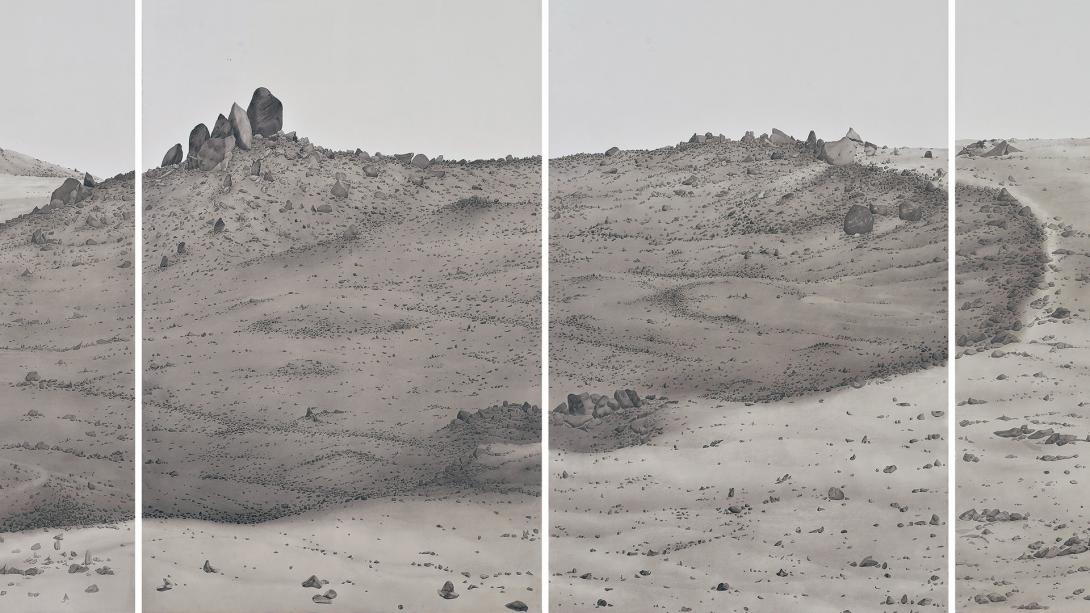Ali Kazim
APT9
Born 1979 Pattoki, Pakistan
Lives and works in Lahore, Pakistan
Ali Kazim creates highly crafted works that experiment with painterly techniques to create atmospheric, dream-like qualities. He is interested in the history of Pakistan’s landscapes and the ancient civilizations that once inhabited the region, particularly imagining the stories hidden in unexcavated remains. Kazim regularly visits these areas, studying the mounds which form the contours of the landscapes, and searching for pottery shards and remnants of buried cities. Working in a range of techniques, styles and scales, his delicate and textural paintings capture deserted landscapes in their dormant and lifeless condition, or in a sudden moment of transformation as severe weather tears through parched terrain.

Ali Kazim / Pakistan b.1979 / Untitled (Ruins series) 2017 / Watercolour pigments on paper / 206 x 456cm / © Ali Kazim / Image courtesy: The artist and Jhaveri Contemporary, Mumbai
In precise detail, Ali Kazim captures the stillness of a deserted landscape or a sudden transformation as a storm tears through parched terrain. His paintings are based on the Punjab region of Pakistan – once home to a large part of the Indus Valley Civilisation and now scattered with ancient ruins. Kazim regularly visits these ruins, studying the mounds that form the contours of the landscape, and searching the sites of long-abandoned cities, which are partly exposed or still buried.
He draws on a repertoire of techniques and materials to access these emotive surroundings and conjure the mysteries of forgotten cities. The large landscape is informed by Siyah Qalam, a fleetingly popular form of Persian painting influenced by the ink painting traditions of East Asia, whereby multiple layers of ink were applied with a fine brush. Kazim also creates atmospheric compositions on polyester film rendered in pigment with cotton or soft brushes. Stencils and erasers are then used to detail bolts of lightning, and storm and dust clouds, elements that momentarily bring the landscapes to life.
Kazim is also interested in how pottery shards have transformed over centuries from practical objects to remnants of deserted and forgotten places, and the blackened ceramics bear organic lines or veins to resemble both rocks and organs.
